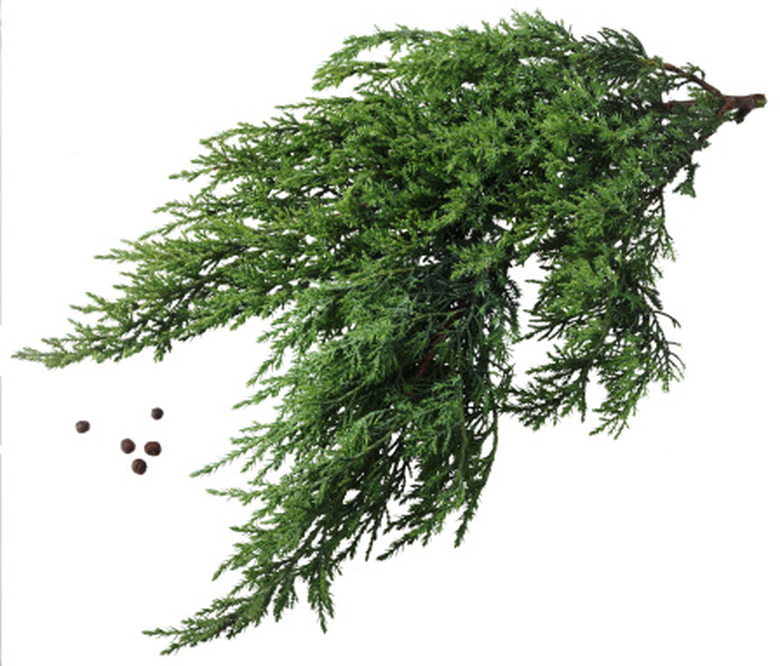Are Cedar & Juniper Berries The Same?
Plants in the botanical genus Juniperus carry common names of both juniper and cedar. If the botanical identities of the juniper and cedar in question are both in genus Juniperus, their fleshy female cones or "berries" are the same.
Types
Sprawling or upright ornamental shrubs often found in gardens, junipers bear bluish-black berries in fall and winter. Cedar trees, such as Juniperus virginiana, also bear these aromatic, soft berries on branch tips. True cedars, in genus Cedrus, do not produce similar cones. Cedrus cones are firm, upright, and the shape and size of poultry eggs.
Features
Juniper and cedar plants in genus Juniperus bear male and female cones on separate plants. Only female plants bear the berries. Each female berry contains one to 10 seeds. Berries persist on branches for two to three years.
- Plants in the botanical genus Juniperus carry common names of both juniper and cedar.
- Juniper and cedar plants in genus Juniperus bear male and female cones on separate plants.
Fun Fact
The berries from the common juniper, Juniperus communis, are crushed and used to flavor gin. The scented oils in cedar tree berries and foliage supply the fragrance used in items marketed as having a pine scent.
Pick Juniper Berries?
bushes are popular shrubs that produce a bluish colored berry. Not all juniper berries are edible. In fact, some are poisonous. Other varieties of juniper such as the California juniper (Juniperus californica), hardy in USDA zones 8 through 10, yield berries that are not poisonous but are bitter-tasting. Juniper berries ripen on a two- to three-year cycle. In the second year of the cycle, the berries often remain hard and green in color. Avoid harvesting juniper berries too early in the year. Alternately, you can use a berry picker or shake the bush until the berries fall off and land on a collecting tarp, but these methods remove the bitter green berries as well as the ripe blue berries.
- The berries from the common juniper, Juniperus communis, are crushed and used to flavor gin.
References
- "A-Z Encyclopedia of Garden Plants"; Christopher Brickell and H. Marc Cathey, eds.; 2004
- "Economic Botany: Plants in Our World, Second Edition"; Beryl Brintnall Simpson and Molly Conner Ogorzaly; 1995
- Henriette's Herbal: Picking Juniper Berries
- University of Illinois Extension: Selecting Shrubs for Your Home: Common Juniper
- New York Times: Juniper Berries? Be Picky
- Missouri Botanical Garden: Juniperus
